Philadelphia, PA
This post continues our family vacation to Hershey, Pennsylvania in the summer of 2016. Usually, we try to keep our vacation road trips to an hour or less and Philadelphia, PA was a ways to venture, but we all agreed that it was worth the extra drive. We placed it on the itinerary firmly in the middle of the week to keep our long days of driving adequately spaced. We departed right on time, but major traffic and road construction delayed our arrival. Being the positive travelers that we are (most times), we decided not to worry and just be happy. Next time we’ll leave earlier – or even better – spend a couple nights in Philly so we can explore the City of Brotherly Love more thoroughly.
 Since there were eight of us and we were in two vehicles, we decided we’d meet at the Independence Visitor’s Center. We parked in their secure structure and picked up our Historic Philadelphia Passes, which included two days of on/off access to the Philly PHLASH Bus and admission to the National Constitution Center, the Betsy Ross House and Christ Church Burial Ground. Of course there were many other things to visit, but they are free and don’t require tickets.
Since there were eight of us and we were in two vehicles, we decided we’d meet at the Independence Visitor’s Center. We parked in their secure structure and picked up our Historic Philadelphia Passes, which included two days of on/off access to the Philly PHLASH Bus and admission to the National Constitution Center, the Betsy Ross House and Christ Church Burial Ground. Of course there were many other things to visit, but they are free and don’t require tickets.
With the bus pass, we didn’t have to deal with Philly traffic and we could get a ride from the farthest points to save our legs and take a break. We were off to explore “America’s Most Historic Square Mile” and beyond in the easiest way, since our time was limited and we were unsure how well our little ones would take this big day. Turns out they were troopers. They had a blast exploring the sites and once they start learning about our nation’s history in school, hopefully a lightbulb will come on with a reminder that they were here!
“Philadelphia is where the American Dream was founded. It’s where courageous visionaries crafted the model for modern-day democracy that inspires people globally to embrace the power of their individuality and our human potential.
Philadelphia is home to iconic places such as Independence Hall, a UNESCO World Heritage Site that changed the world when the fathers of our nation used the location to debate and adopt both the Declaration of Independence and U.S. Constitution.” – READ MORE about America’s Most Historic Square Mile
There was quite an obvious contrast between the old and the new as we explored these historic sites amid a very large city. None is more obvious than the view at one point in the day – just down the street as we were waiting for the Phlash Bus. In the photo below right, Philadelphia City Hall appears to be jammed in amongst the newer buildings surrounding it. Since we didn’t have enough time to visit that area of town, I can only assume that it isn’t as snug a fit as it looks from this angle – hopefully anyway. When I googled that building, a wonderful article came up with a beautiful photo. The article is titled “The challenge of preserving architectural heritage in Philadelphia“. Please check it out, if for nothing else just to see the beautiful close-up photo. That would be a fantastic area to visit, so I’m pencilling in another visit in the near future.
If you’d like more information about City Hall, including hours and tours, etc., visit VisitPhilly.com. “City Hall is the largest municipal building in the United States, containing over 14.5 acres of floor space. It is an architectural treasure inside and out.” Let me know how you like it, if you see it before I do!
The tour for Independence Hall is free, but we needed tickets to enter and our timing was perfect. We started off the day here. After we presented our tickets, we were asked to wait in the courtyard, which was beautiful too. We enjoyed the peace and quiet of the courtyard and were able to get some nice photos.
In the center photo below, John Barry’s statue stands with his hand outstretched.
“Indeed, Barry deserves the proud epithet, “Father of the American Navy,” a title bestowed on him not by current generations of admirers, but by his contemporaries, who were in the best position to judge.
In the space of 58 years, this son of a poor Irish farmer rose from humble cabin boy to senior commander of the entire United States fleet. Intrepid In battle, he was humane to his men as well as adversaries and prisoners. Barry’s war contributions are unparalleled: he was the first to capture a British war vessel on the high seas; he captured two British ships after being severely wounded in a ferocious sea battle…” – READ MORE about John Barry
Finally, we shuffled into an area where a gentleman gave us a History of the American Revolution speech – which was greatly appreciated, since it has been a long while since I have stopped to think about the intensity of the times and the sacrifices so many made to make these United States of America. His presentation only lasted about 15 minutes, but was very interesting, refreshing our memories of the Revolution and ending with our Independence in 1776.
“The war of independence waged by the American colonies against Britain influenced political ideas and revolutions around the globe, as a fledgling, largely disconnected nation won its freedom from the greatest military force of its time.” – READ MORE about the American Revolution
The Pennsylvania Supreme Court Chamber
“Predating the United States Supreme Court by 67 years, Pennsylvania’s highest court was established by the General Assembly on May 22, 1722. Interpreting the Pennsylvania Constitution, it was the first independent Supreme Court in the United States with the power to declare laws made by an elected legislative body unconstitutional.” – READ MORE about the Pennsylvania Supreme Court Chamber
The Assembly Room
“The Assembly Room’s story is one of politics, power and people. Today, the room has been returned to its 18th century appearance.
The Second Continental Congress
The Pennsylvania legislature loaned their room out to the men of the Second Continental Congress in May 1775. Meeting just a month after shots had been fired at Lexington and Concord, the men prepared for war. They approved the nomination of George Washington as Commander in Chief of the newly created army, and they approved the resolution creating the Marine Corps. They also pursued peace, drafting the Olive Branch Petition. King George III never responded to that petition and talk began to grow of seeking independence. On July 2, 1776, the men voted to approve the resolution for independence. On July 4, 1776, they voted to approve their document, the Declaration of Independence. The Declaration of Independence was signed in this room on August 2, 1776.The Constitutional Convention
The Pennsylvania legislature loaned their room out again in May 1787 to the men of the Constitutional Convention. The nation’s first framework of government, the Articles of Confederation, had proven unsatisfactory. In a climate of great concern, delegates arrived in Philadelphia to address the inadequacies of the Articles. In four months, they created the U.S. Constitution, a feat George Washington called “little short of a miracle”. The debates of the Constitutional or Federal Convention were heated at times, over issues like the power balance between large states and small states as well as the slave trade. During the debates, Pennsylvania delegate and elder statesman Benjamin Franklin looked at the chair where Washington was seated as the presiding officer. Carved into that chair is a sun. As the men signed the Constitution, Franklin said that he had the great happiness to know it was a rising and not a setting sun.The Rising Sun chair was made in Philadelphia by John Folwell in 1779 to be the chair for the speaker of Pennsylvania’s legislature. Carved into the chair’s crest rail is a sun, a liberty pole and a liberty cap. The Assembly speaker used this chair in Harrisburg until the 1840’s. The state returned it to the city of Philadelphia in 1872 for the upcoming (1876) Centennial celebration.” – READ MORE about the Assembly Room of Independence Hall
After we left Independence Hall, we took the Phlash Bus to the The Reading Terminal Market in hopes of finding some lunch. That may have been a lot of fun under different circumstances, but I will admit I was a little uncomfortable with the herds of people that had the same idea.
“Reading Terminal Market is an enclosed public market found at 12th and Arch Streets in downtown Philadelphia, Pennsylvania. Over one hundred merchants offer fresh produce, meats, fish, artisan cheese, groceries, ice cream, flowers, grilled cheese, baked goods, crafts, books, clothing, and specialty and ethnic foods. Every space in the market is rented out; three of the vendors are descendants of original market merchants. The market is open every day of the week. ” – READ MORE about the Reading Terminal Market

The Reading Terminal Market occupies the ground floor and basement levels of the Reading Terminal’s former train shed, now part of the Philadelphia Convention Center. The market itself was an awesome sight and should definitely be experienced A) not at lunch time and B) not with three small kids in tow.
So we opted for the Hard Rock Cafe, right next door. Our table of eight was seated in the appropriately named Philadelphia Room, which was gorgeous. We usually don’t frequent chain restaurants while vacationing, but this was just too good to pass up. While we waited for our food, I went out into the corridor to check out the mural I noticed as we walked up. It seemed to bring back thoughts of days gone by.
“In 1889, the Reading Railroad decided to build a train depot, passenger station, and company headquarters on the corner of 12th and Market Streets. The move came eight years after the Pennsylvania Railroad opened its Broad Street Station several blocks away at 15th and Market Streets, and one year after the Baltimore and Ohio Railroad opened its 24th Street Station at 24th and Chestnut Streets.
The chosen location was occupied by an open-air market that had been in continuous operation since 1853. After loud complaints and much negotiation, the railroad agreed to purchase the markets for $1 million and move them to a new structure: the Reading Terminal Market, located to the rear (north) of the headhouse at 12th and Filbert Streets. This required the trainshed and all of its tracks to be constructed one story above street level, with the Reading Viaduct to bring trains in and out.” – READ MORE about the Reading Terminal
Next up: “Philly Part Two.”
Click to see other Pennsylvania posts.
Happy trails,
Barb


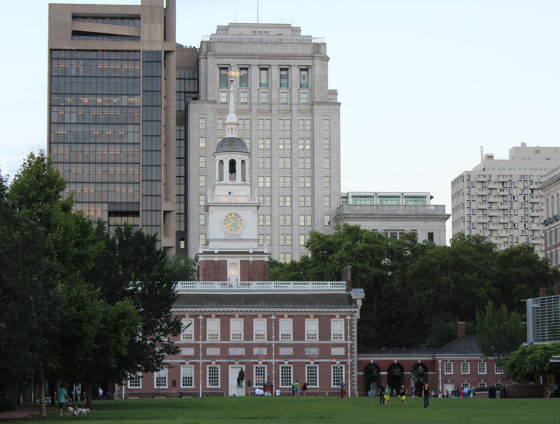
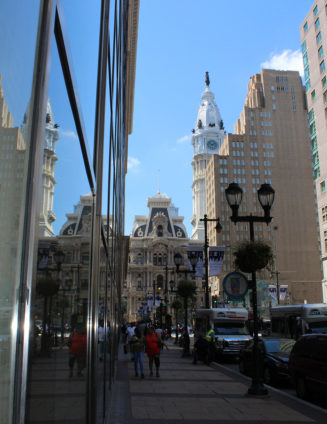
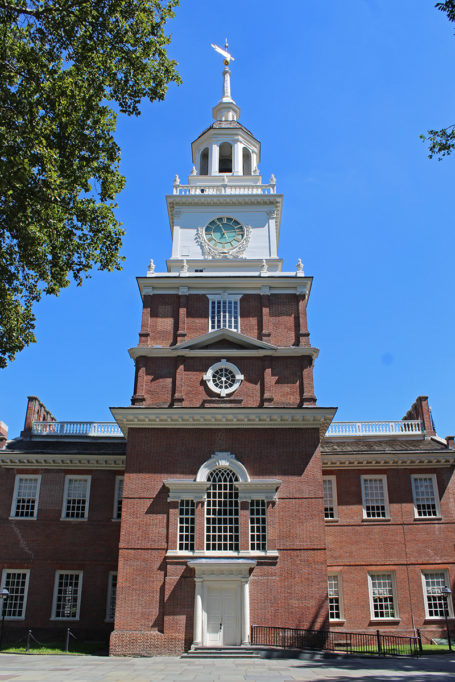
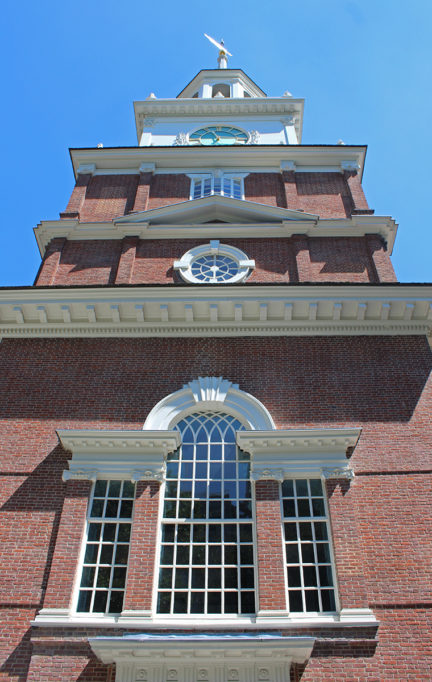
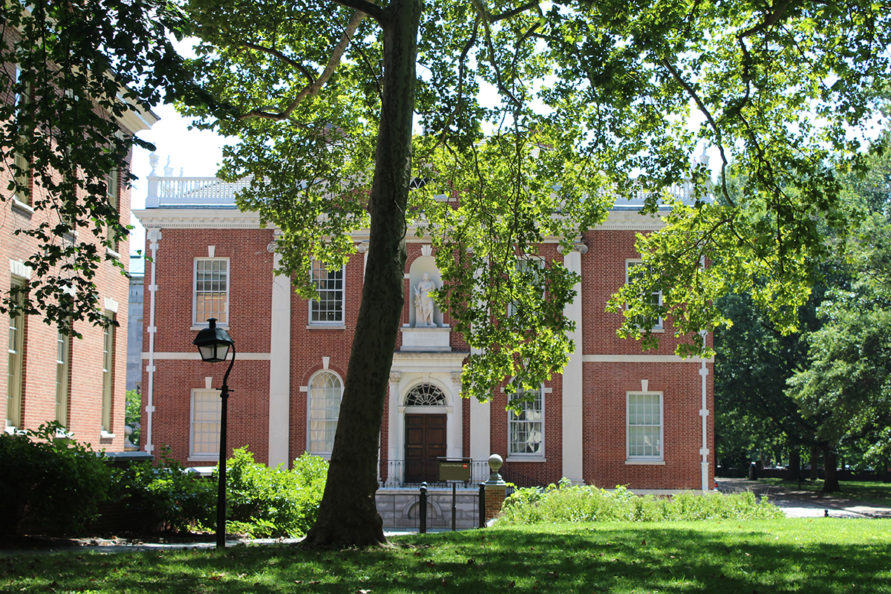
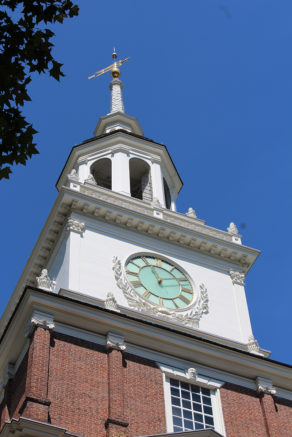
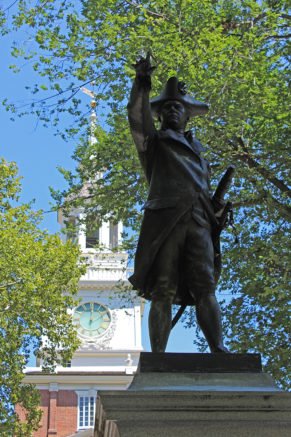
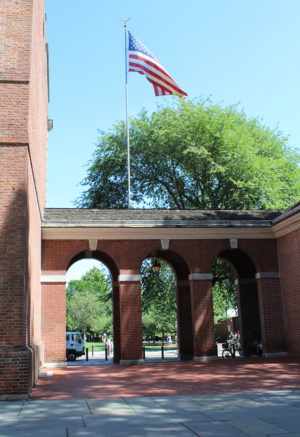
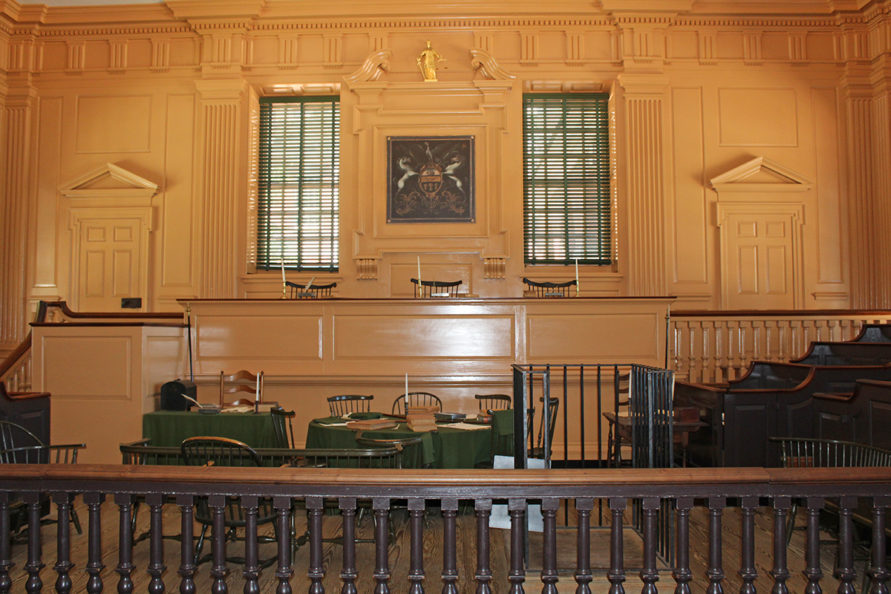
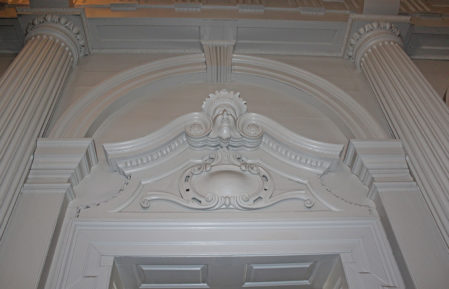
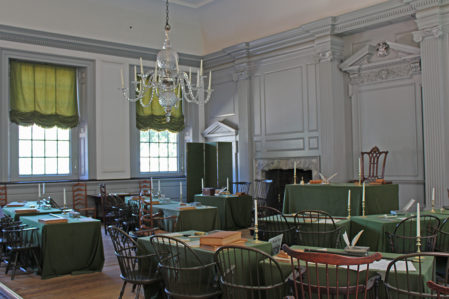


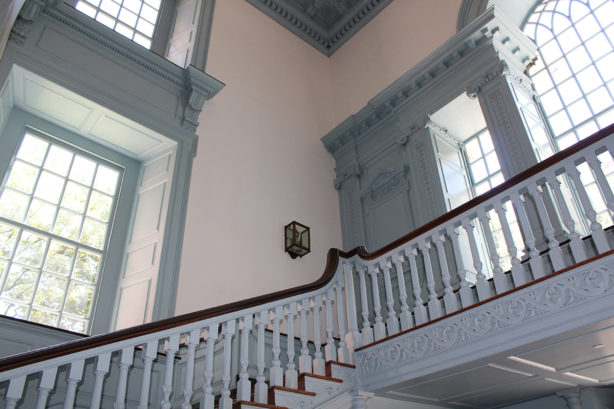
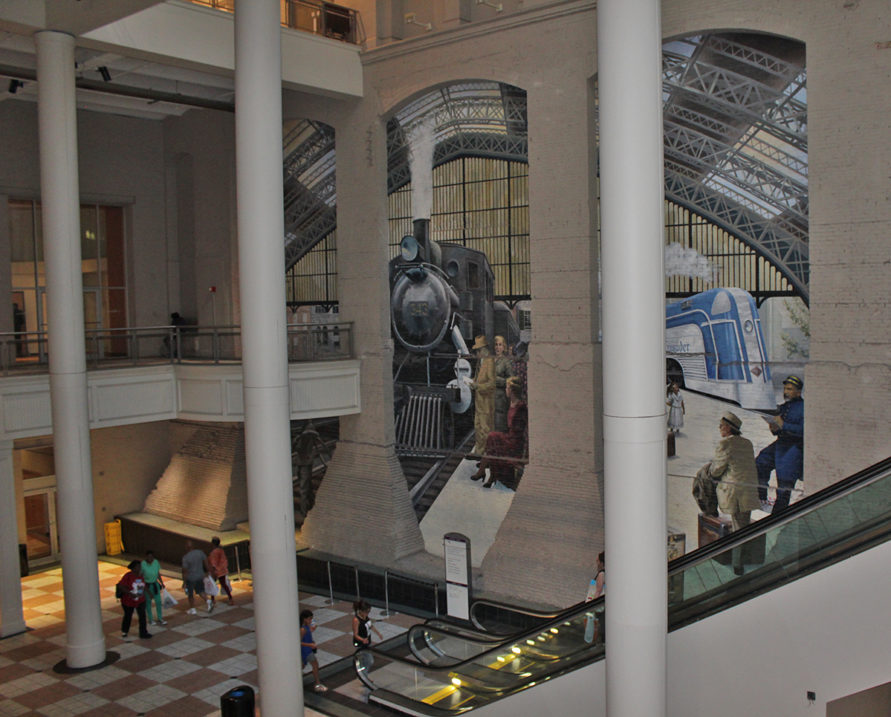
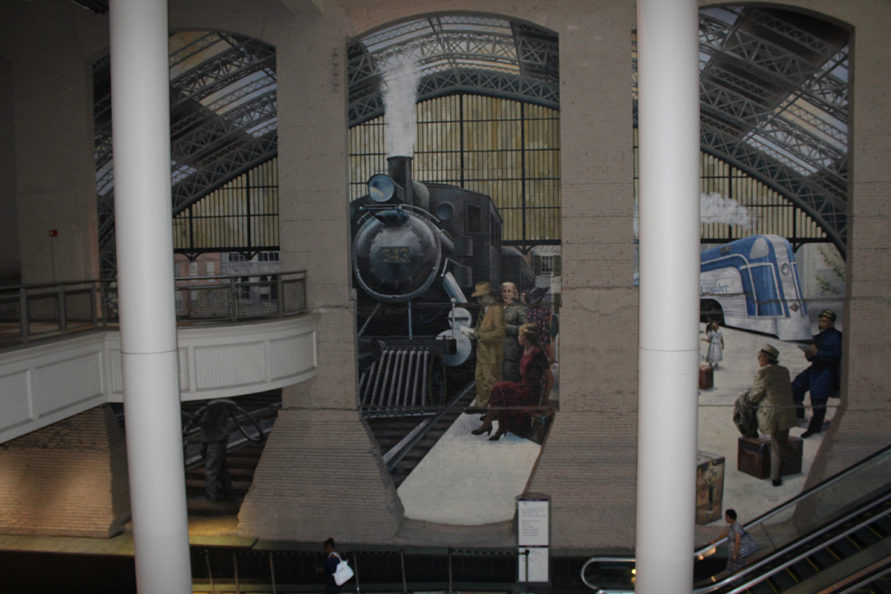






Comments are closed here.